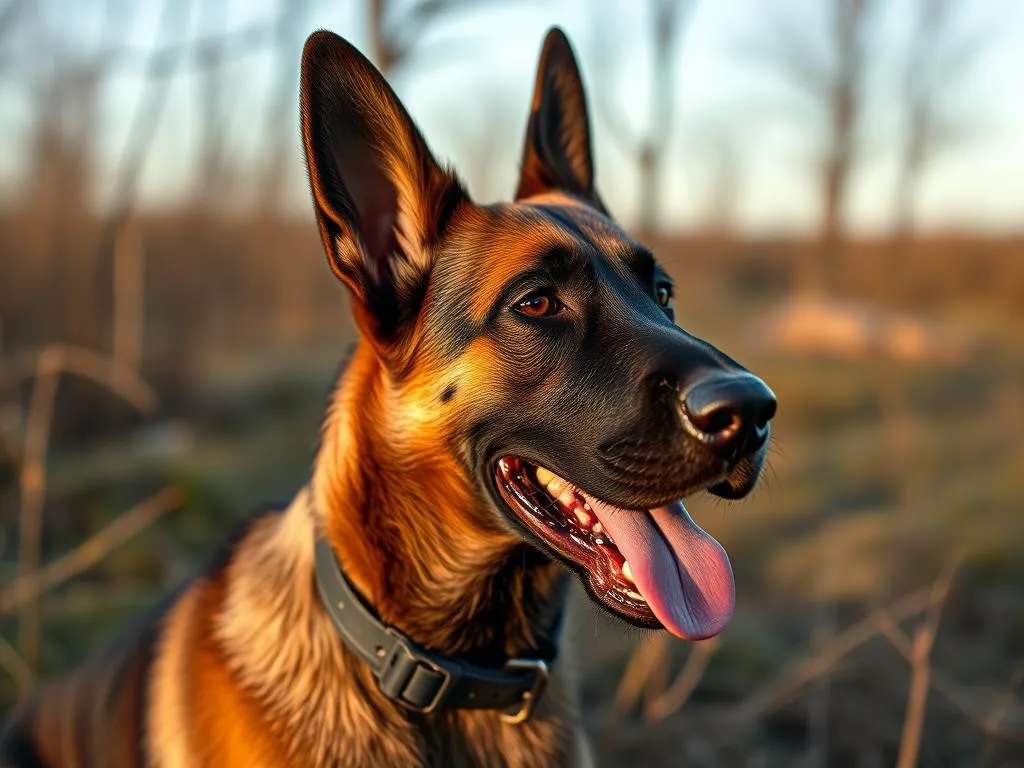
Introduction
The Belgian Malinois is a highly intelligent and active breed, often recognized for its agility and protective nature. Understanding how different dog breeds interact with children is essential for families considering a new pet. This article will explore whether Belgian Malinois are good with kids, diving into their temperament, behavior, and what families should consider before welcoming one into their home.
Understanding the Belgian Malinois
Breed History
The Belgian Malinois originated in Belgium, specifically from the city of Malines, which is reflected in its name. Initially bred for herding sheep, this breed has evolved significantly over the years. Today, Belgian Malinois are often employed in police and military roles due to their outstanding work ethic and trainability. Their history as working dogs contributes to their strong drive and intelligence, which are essential traits for families to consider.
Physical Characteristics
Belgian Malinois are medium-sized dogs, typically weighing between 40 to 80 pounds. They are well-proportioned, with a strong, athletic build. Their coat is short and dense, usually fawn-colored with a black mask, making them relatively low-maintenance in terms of grooming. Regular brushing helps minimize shedding, but they aren’t as high-maintenance as some other breeds.
Temperament and Personality Traits
Known for their intelligence and high energy, Belgian Malinois are often described as alert, confident, and eager to please. They thrive on mental stimulation and physical exercise, making them excellent companions for active families. However, their energy can sometimes translate into hyperactivity if not adequately managed. Understanding their temperament is crucial for families, especially those with young children.
General Considerations for Dogs and Children
Importance of Breed Selection
Selecting the right breed is vital when considering a new dog for a family with children. Each breed has unique characteristics that can influence compatibility. Breeds like Golden Retrievers and Labradors are commonly known for their gentle nature with kids. However, the Belgian Malinois can also be a good fit if the family is prepared for their specific needs.
Training and Socialization
Training and socialization are key components of ensuring a dog is family-friendly. For Belgian Malinois, early socialization with children is crucial. This breed responds well to positive reinforcement training techniques, which help establish boundaries and proper behavior. Families should invest time in training sessions and expose their dog to various environments and situations to ensure they adapt well to life with children.
Are Belgian Malinois Good with Kids?
Temperament Compatibility
When assessing the compatibility of Belgian Malinois with children, it’s important to consider their temperament. They are generally loyal and protective, which can be beneficial in a family setting. However, their high energy and strong drive for action mean they may not be suitable for families with very young children who may not understand how to interact appropriately with dogs.
Behavior Around Children
Belgian Malinois can exhibit positive behaviors when interacting with children, particularly if they have been well socialized. Many families report their dogs being playful and affectionate with their kids. However, it’s essential to supervise interactions at all times, especially during the initial introductions.
Anecdotal evidence suggests that children who are taught how to interact with dogs can build strong bonds with Belgian Malinois. For instance, families often share stories of their Malinois playing fetch with children or being protective during outdoor activities, showcasing their family-oriented nature when appropriately trained.
Factors Influencing Compatibility
Several factors influence the compatibility of Belgian Malinois with children. Training plays a significant role; a well-trained dog is more likely to behave appropriately around kids. Additionally, the age of the child matters—older children who can follow rules and understand dog behavior may be more compatible with this breed. Lastly, the home environment should be structured to minimize stress for both the dog and children, ensuring a safe and harmonious living situation.
Tips for Introducing a Belgian Malinois to Children
Preparing Your Home
Creating a child-friendly environment is crucial when introducing a Belgian Malinois to your home. Establish boundaries that both the dog and children understand. Designate certain areas as off-limits for the dog and teach children to respect those spaces. This helps in creating a sense of security for both parties.
Teaching Kids How to Interact with Dogs
Educating children on how to interact with dogs is vital for fostering a positive relationship. Teach children to approach the dog calmly, avoid sudden movements, and respect its space. It’s also important to instill the idea that the dog is not a toy and should be treated with kindness and respect. Commands like “sit” and “stay” can be taught to both the dog and the children, reinforcing a cooperative relationship.
Supervision and Safety
Constant supervision is essential when Belgian Malinois and children interact. Parents should monitor playtime closely, looking for signs of stress or discomfort in the dog or child. Signs of stress in a dog may include excessive panting, growling, or attempts to retreat. Recognizing these signs can help prevent any unwanted incidents and ensure a safe environment for everyone.
Potential Challenges of Having a Belgian Malinois with Kids
Energy Levels and Exercise Needs
One of the most significant challenges with Belgian Malinois is their high energy levels. These dogs require substantial daily exercise, including brisk walks, playtime, and mental stimulation. Families may need to factor in the time and commitment required to meet these needs. Activities such as agility training or obedience classes can help channel their energy positively and strengthen the bond between the dog and children.
Protective Instincts
Belgian Malinois are known for their protective instincts, which can be a double-edged sword in a family setting. While their protective nature can provide a sense of security, it may also lead to overprotectiveness, particularly around unfamiliar people or situations. Training should focus on socializing the dog with various environments and people to help mitigate excessive protective behavior.
Behavioral Issues
Like any breed, Belgian Malinois can develop behavioral issues if not properly trained or socialized. Common challenges include chewing, barking, or jumping, particularly if they are bored or anxious. Consistency in training and the use of positive reinforcement methods is crucial for addressing these issues. Families should be prepared to invest time in training and work with a professional if needed to ensure the best outcomes.
Conclusion
In summary, Belgian Malinois can be good with kids, provided that families are prepared for their specific needs and characteristics. Their intelligence and loyalty can make them wonderful companions, but they require dedicated training, socialization, and exercise. Families should assess their unique situations and consider how a Belgian Malinois would fit into their lives before making a decision. Responsible dog ownership and understanding the dynamics of family interactions are key to ensuring a successful relationship between a Belgian Malinois and children.









